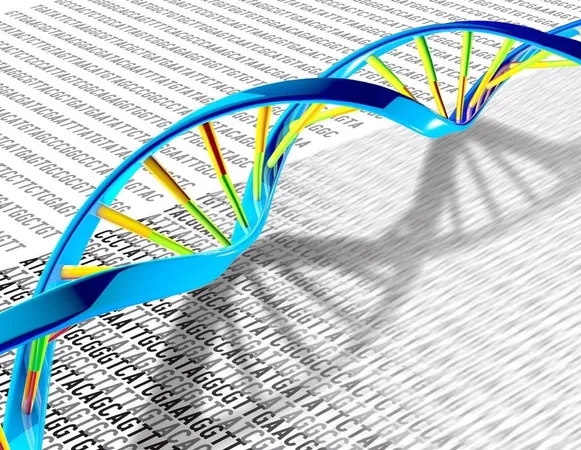
Groundbreaking Discovery: DNA Damage Could Dismantle Our Understanding of Cancer Mutations!
2025-01-15
Author: Siti
Introduction
In a revelatory new study, scientists have uncovered that certain forms of DNA damage in healthy cells can persist for years, significantly challenging the conventional understanding of genetic mutations and their role in cancer development.
The Study
Researchers from the Wellcome Sanger Institute, alongside their collaborators, embarked on a groundbreaking analysis that involved reconstructing family trees of hundreds of individual cells. By examining patterns of shared mutations, they were able to trace common ancestors among the cells, leading to astonishing revelations about mutation inheritance.
Key Findings
The study revealed that, unlike the vast majority of DNA damage, which is effectively repaired by the body's intrinsic mechanisms, some forms of damage can evade repair over long periods. This unsettling persistence presents multiple opportunities for harmful mutations to occur, greatly increasing the risk of developing cancers.
Published on January 15 in Nature, this research shifts our paradigm of mutations and opens new avenues for understanding how various cancers develop over time. Throughout their lifetimes, human cells accumulate somatic mutations due to environmental factors, such as smoking, or normal biochemical processes occurring within the body. However, the gap between DNA damage and mutations must now be critically reevaluated.
Understanding DNA Damage vs. Mutations
DNA damage is not synonymous with a mutation; rather, it's akin to a severe alteration in the genetic material, whereas a mutation resembles a simple spelling mistake within the DNA sequence. This distinction is vital, as DNA damage can result in faulty DNA replication during cell division, leading to complex mutations that may ultimately spark cancerous growths.
Research Analysis
For the study, researchers analyzed a compilation of data known as somatic phylogenies, comprising 103 individual cell family trees derived from blood stem cells, bronchial epithelial cells, and liver cells. Astonishingly, they found that 15 to 20% of mutations identified in blood stem cells originated from a specific type of DNA damage that could persist in these cells for two to three years, sometimes even longer.
Implications of Persistence
This persistence carries alarming implications. Every time a damaged cell divides, the chances of generating a mutation multiply, creating a breeding ground for potentially cancerous cells. Although these types of damage occur infrequently, their durability elevates the risk of mutations to levels comparable to more common types of DNA damage.
Experts Weigh In
“The families of cells we've analyzed give us a window into the cellular evolution from conception onwards,
 Brasil (PT)
Brasil (PT)
 Canada (EN)
Canada (EN)
 Chile (ES)
Chile (ES)
 Česko (CS)
Česko (CS)
 대한민국 (KO)
대한민국 (KO)
 España (ES)
España (ES)
 France (FR)
France (FR)
 Hong Kong (EN)
Hong Kong (EN)
 Italia (IT)
Italia (IT)
 日本 (JA)
日本 (JA)
 Magyarország (HU)
Magyarország (HU)
 Norge (NO)
Norge (NO)
 Polska (PL)
Polska (PL)
 Schweiz (DE)
Schweiz (DE)
 Singapore (EN)
Singapore (EN)
 Sverige (SV)
Sverige (SV)
 Suomi (FI)
Suomi (FI)
 Türkiye (TR)
Türkiye (TR)
 الإمارات العربية المتحدة (AR)
الإمارات العربية المتحدة (AR)